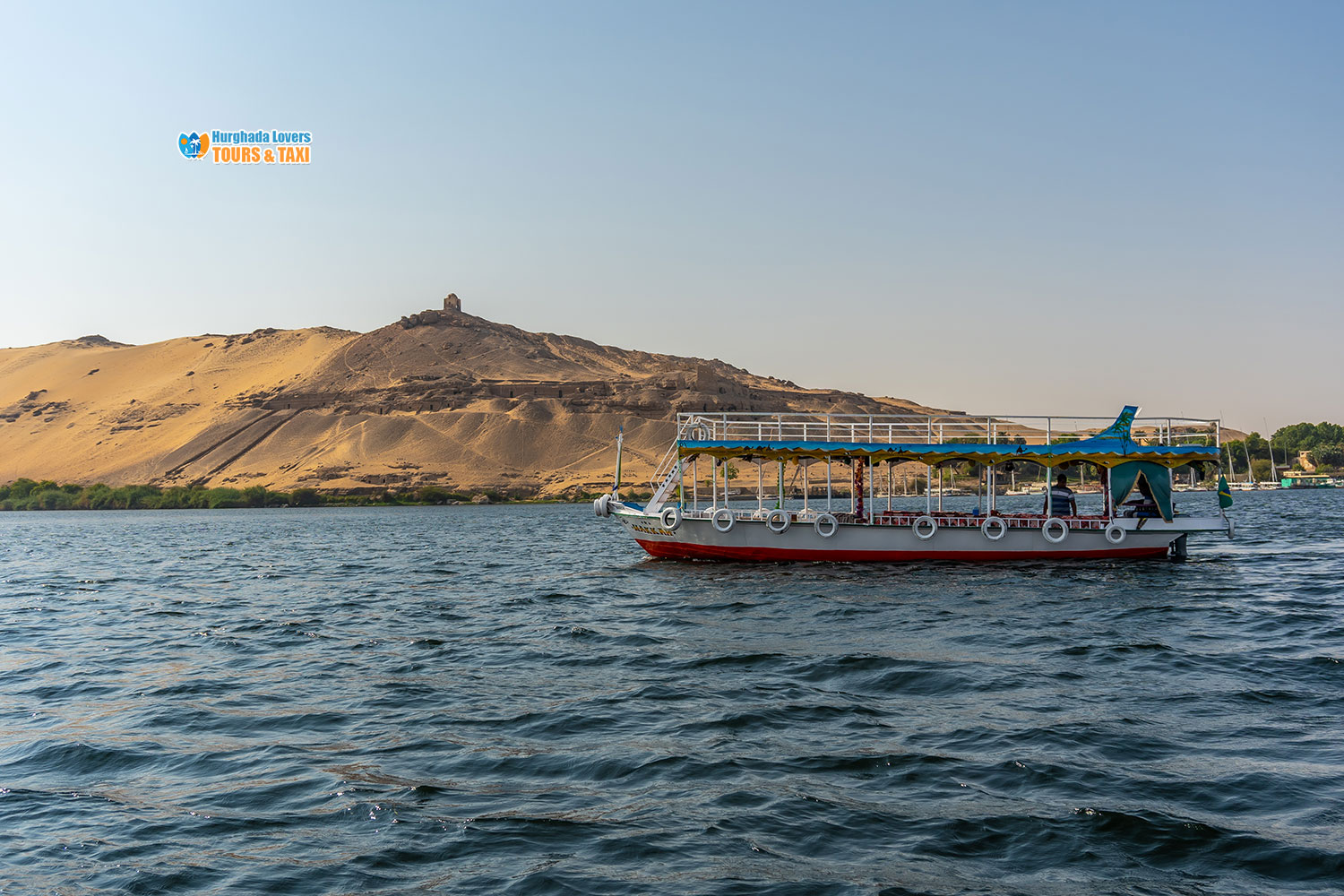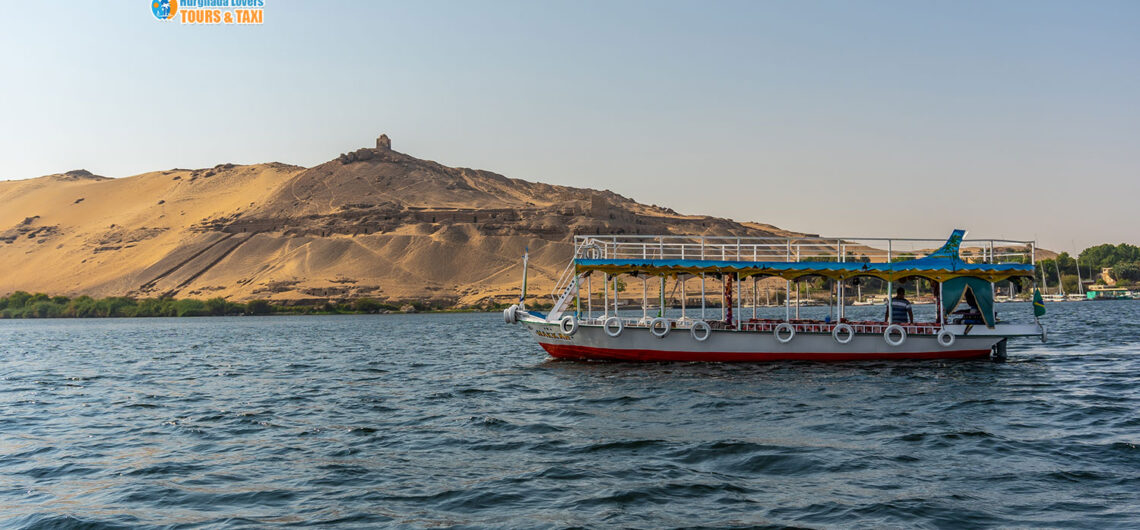Elephantine Island in Aswan, Egypt | Places to Visit in Aswan
Facts about the most beautiful islands in Aswan “Siou and Koti” and the history of the most important Egyptian Temples and Pharaonic Egyptian Monuments on the island, the museum, visiting hours and more.
The Nubian villages of Siu and Koti, or what is called Elephantine Island, are the Nile islands located in Aswan.
They are considered one of the islands that contain a large group of Pharaonic Egyptian Antiquities and Mortuary Temples in addition to museums that show us the Ancient Egypt civilization that passed through Egypt to discover the Ancient Egypt History. Learn more about these villages below..
Elephantine Island Facts
How big is Siu and Koti?
Elephantine Island is 1500 meters long and 500 meters wide..
How many people live on the island?
The population of the island is 5,800 people, most of whom are Nubia, and are concentrated in two villages in the middle of the island, namely Siu and Koti..
The reason for naming Elephantine Island
In ancient times, this island of Elephantine was known in the Ancient Egyptian Language and Pharaonic texts as Abu, which means elephant..
The reason for naming the island with this name is the presence of a port on the island that receives African ivory, which is extracted from elephant tusks..
The name was translated into Greek as Elephantine, which refers to the ivory of an elephant’s tusk..
This island was one of the main trade routes in Egypt, and the island was also the main headquarters for many missions, including governmental, military and commercial missions, to discover the extent of the development of Trade in Ancient Egypt..
Another reason for this name is the resemblance between the shape of the island and an elephant’s tusk..
Elephantine Island Museum
It is also called Aswan Museum..
The museum is located in the southeast of Elephantine Island..
The museum dates back to 1917 AD and houses a large collection of Nubian antiquities..
The museum was discovered by a foreign mission..
The museum contains antiquities of ancient Egypt, statues of the Egyptian Pharaohs kings, queens of Pharaonic Egypt “Female Pharaohs“, and Mummy of the Pharaohs.
There is a symbol of God Khnum, the most famous of the Egyptian deities – Ancient Egyptian gods and Goddesses, in addition to other architectural and decorative elements, the pharaonic Ancient Egyptian Coffins, and funerary paintings, as in the Ancient Egyptian religion..
Elephantine Island
The most important archaeological tourist attractions in Aswan and tourist places in Aswan, Egypt, as it includes a large group of Pharaonic stone temples to tell us about the lives of the pharaohs in the Pharaonic civilization, the museum, the Gezira Hotel, and more.
What can you see when visiting the southern fortress of Egypt?
The most important places and tourist attractions in the city of Aswan, and more details about visiting hours and valuable information about the Aswan Island.
Elephantine Island was one of the strongest fortresses on the southern borders of Egypt and is currently located opposite the “Kataract” Hotel in Aswan. Its god was the god “Khnum” or “Gnome”, in the form of a ram’s head..
The name Elephantine is derived from its ancient Egyptian name, meaning the land of the elephant, and it can be interpreted as either being a center for the ivory trade, also called Abu in ancient Egyptian, which came to it from Sudan, or the name refers to the elephant that lived in this area in the Predynastic Period, starting from the Naqada III civilization until the Dynasty 00 and the Egyptian Dynasty 0.
About Elephantine Island, the most beautiful tourist attractions in Aswan
“Elephantine” is the name given by the Greek-Roman era to the island facing the city of Aswan. It is one of the largest islands in Aswan, located north of the first cataract, and has had a long historical importance that began in the pre-dynastic era and continued until the era of the Roman Kingdom.
This island extends 1.5 km in length and 500 meters in width.
What can you see when visiting Elephantine Island Aswan?
There are many archaeological sites located on Elephantine Island, where remains of prehistoric pottery and stones were found on the island to discover how Industry in ancient Egypt and the most important Ancient Egyptian Metallurgy.
It also includes a group of monuments dating back to the Old Kingdom of Egypt until the modern one, including the The Funerary Temple Of King Thutmose III, which belongs to King Thutmose III of Eighteenth Dynasty of Egypt of The New Kingdom of Egypt, Mortuary Temple of Amenhotep III, which belongs to King Amenhotep III, and the Temple of Khnum, in addition to a Greco-Roman cemetery..
Also, one of the most important things associated with the island is the discovery of the Elephantine Papyri in Aramaic, the most famous Ancient Egyptian Papyrus.
Also on Elephantine Island are many ruins of the ancient city, as well as some important antiquities that were found in Elephantine itself and the areas surrounding the city of Aswan..
One of the most important things associated with this island is the rock tombs carved on the western bank of the Nile in Aswan, northwest of the island, on a mountain slope now known as the Qubbet el-Hawa Tombs, which were chosen by the nobles or rulers of the island to be their eternal residence in the afterlife..
During your visit to Elephantine Island, Aswan, you can see the remains of stone temples. On the gate of one of the southern halls of the temple, there are engravings of a statue of Alexander the Great in the form of an Egyptian king offering sacrifices to various gods.
His name is written in hieroglyphics, indicating the development of Sculpture in Ancient Egypt.
Elephantine Island visit date Aswan:
The island can be visited at any time of the day, but it is best to visit in the morning to see the ruins in the sunlight..
Also among the sights that can be noticed when you visit Elephantine Island is the Nile water gauge dating back 7,000 years, which before its fall was a key factor in determining the taxes that farmers had to pay..
As well as the Elephantine Valley of the Nobles in Aswan, which are among the most prominent rock Egyptian Tombs, which appeared in the Old Kingdom of Egypt at the beginning of the reign of King Djoser of Third Dynasty of Egypt, and which were built in the mountains to protect them from Pharaonic Ancient Egyptian Grave Robbers.
In general, the island includes many Egypt Archaeological Sites. It is 1200 meters long from north to south, and its widest width is about 400 meters.
The island also includes a large number of resorts that you can benefit from their services, in addition to gardens, markets, restaurants and cafes overlooking the Nile River..
Island Temples
Elephantine Island contains temples dating back to the Greek era to the Islamic Egypt History in the early Islamic era..
There is a temple on the island dating back to First Dynasty of Egypt and Second Dynasty of Egypt, which date back to 2800 BC..
The island contains another temple dating back to the Sixth Dynasty of Egypt, which dates back to 2250 BC..
The third temple was built during the reign of King Senusret I of the Twelfth Dynasty of Egypt in the Middle Kingdom of Egypt, which dates back to 1950 BC..
Queen Hatshepsut is also one of the most famous queens of Pharaonic Egypt, who built temples on that island “Mortuary Temple of Hatshepsut in Deir El Bahari and Tomb of Queen Hatshepsut | KV60 within the tombs of Valley of the Kings. Her private museum dates back to 1480 BC..
There is also a temple to the god Khnum, which was robbed of its stones, leaving only one column..
The cemetery of rams is located near the temple and that cemetery also belongs to the same god..
One of the factors of the importance of this island is the interest of the ancient Egyptians in it, so much so that the Twenty-Sixth Dynasty of Egypt, at the beginning of the reign of King Psamtik I in the Late Period, “Black Pharaohs” established a Nile gauge there..
The Roman emperors inscribed their names on the walls of these temples, and there are inscriptions on the southern temple dating back to Alexander..
Note: Facts and secrets of the history will be added soon…
Hurghada Excursions Lovers, Best Travel Agency in Hurghada to provide daily tours to visit the Tourist attractions of Luxor by Hurghada to Luxor Tours and Hurghada to Pyramids Trips. Book online when you come to Hurghada, El Gouna, Sahl Hashish, Makadi Bay, Soma Bay, Egypt Tours Packages.

